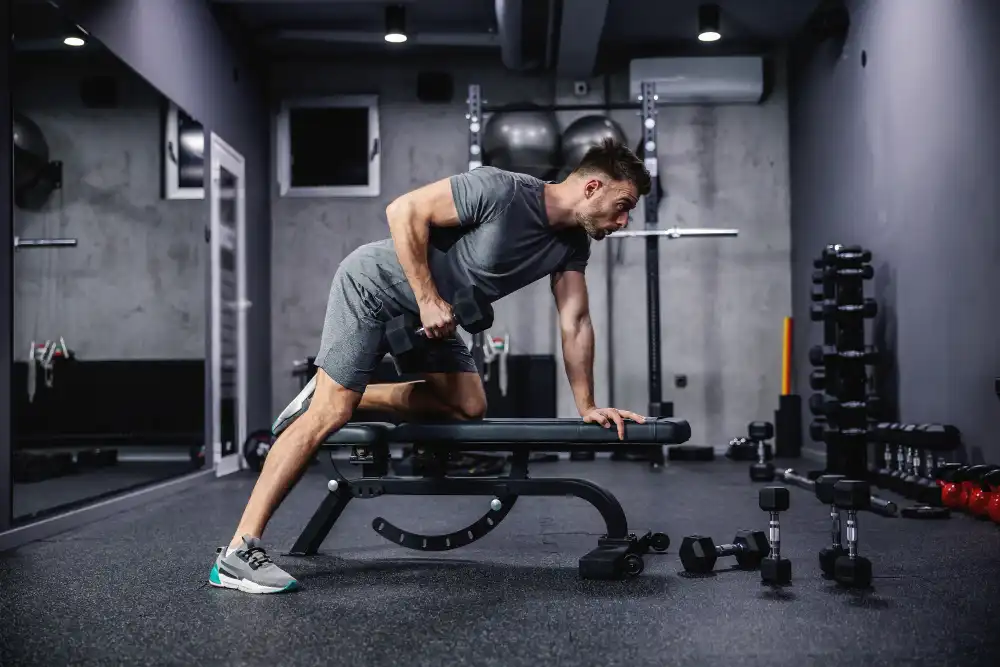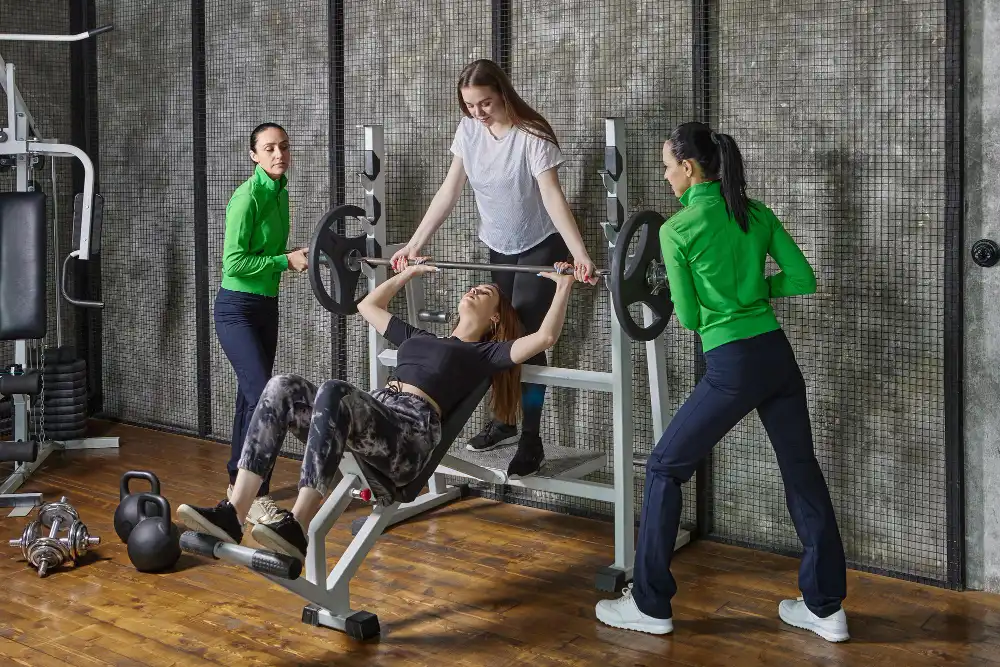The gym is a hub of fitness enthusiasts working hard to achieve their fitness goals. And with the rise of the health and wellness industry, the options for workouts at the gym have become endless. From traditional weightlifting to trendy classes like Zumba and HIIT, numerous types of workouts are now available at the gym. But how many types of workouts are there exactly?
In this article, we will delve into the variety of workouts available at the gym and help you understand the benefits and differences between each one.
1. Strength Training
Strength training, also known as resistance training, is a type of workout that aims to build muscle and increase strength. It involves using weights, machines, or bodyweight exercises to challenge your muscles, causing them to adapt and grow stronger. This type of workout is popular among both men and women as it helps achieve a toned and lean physique and improves overall strength and athleticism.
One of the main benefits of strength training is that it helps increase lean muscle mass. This, in turn, increases your basal metabolic rate, which means you will burn more calories even at rest. This is especially beneficial for those who are trying to lose weight. In addition, strength training also improves bone density, which is crucial for preventing osteoporosis in older adults.
One can do a wide range of strength training exercises at the gym, including free weight exercises like squats, deadlifts, and bench presses, as well as machine exercises like chest presses, leg presses, and lat pulldowns. It is important to use proper form and technique while performing these exercises to prevent injury and maximize results.

2. Cardiovascular Training
Cardiovascular training, commonly called cardio, is any exercise that elevates your heart rate. This includes running, cycling, swimming, and using cardio machines like the treadmill, elliptical, or rowing machine. Cardiovascular training is important for maintaining a healthy heart and reducing the risk of cardiovascular diseases.
One of the main benefits of cardio is its ability to improve cardiovascular endurance. This means your body becomes more efficient at delivering oxygen and nutrients to your muscles, allowing you to work out longer and harder. Additionally, cardio also helps in burning calories and aiding in weight loss.
Various types of cardio workouts are available at the gym, and the most important thing is choosing an activity that you enjoy and can sustain. For example, if you despise running, there is no point in forcing yourself to run on the treadmill. You can try activities like cycling, swimming, or dance classes to find what works best for you.

3. High-Intensity Interval Training (HIIT)
High-intensity interval Training, or HIIT, is a type of workout that involves short bursts of intense exercise followed by rest or lower-intensity activity periods. This type of training has gained popularity in recent years due to its effectiveness in burning calories, improving cardiovascular health, and increasing overall fitness levels.
One of the main benefits of HIIT is its ability to burn a high number of calories in a short period. This is because high-intensity exercises require more energy and elevate your metabolism for hours after your workout. HIIT also helps improve your body’s insulin sensitivity and cardiovascular health.
HIIT workouts are typically time-based and can last 10 to 30 minutes, making them perfect for those with busy schedules. Some popular examples of HIIT workouts include Tabata, Circuit Training, and the 7-Minute Workout. It is important to note that HIIT is a very intense exercise and should be approached cautiously. It is recommended to consult a fitness professional before incorporating HIIT into your workout routine.

4. Aerobic Classes
Aerobic classes are group fitness classes that combine cardio and strength training exercises to provide a full-body workout. An instructor usually leads these classes and includes activities like step aerobics, kickboxing, and dance fitness classes like Zumba and Jazzercise. Aerobic classes are popular for their high-energy environment and ability to build cardiovascular endurance and muscle strength.
One of the main benefits of aerobic classes is their ability to make working out fun. Working out in a group setting can provide motivation and accountability, making it easier to stick to a regular workout routine. Additionally, aerobic classes improve coordination, agility, and balance.
Aerobic classes vary in intensity and can cater to different fitness levels. Choosing a class that suits your fitness level and goals is important. For example, starting with a low-impact class like water aerobics or a beginner Zumba class would be more suitable if you are new to working out.
5. Yoga and Pilates
Yoga and Pilates are popular workouts that improve flexibility, balance, and core strength. While they may seem similar, the two have some key differences. Yoga involves holding static poses and coordinating breath and movement, whereas Pilates involves low-impact exercises that focus on strengthening the core muscles.
Some benefits of yoga and Pilates include improved flexibility, reduced stress levels, and better body awareness. This type of workout is suitable for individuals of all fitness levels and is a great way to complement other forms of exercise.
Conclusion
In conclusion, numerous types of workouts are available at the gym, each with its own set of benefits and challenges. It is important to choose a variety of exercises that cater to your individual needs and fitness goals.
By incorporating a mix of strength training, cardio, HIIT, and other workouts, you can achieve a well-rounded and balanced workout routine to help you reach your fitness goals faster. Always listen to your body, consult a fitness professional when needed, and most importantly, have fun while working out!
FAQs
1. How much time should I spend on each type of workout at the gym?
The amount of time you spend on each type of workout at the gym should depend on your fitness goals and individual preferences. A general recommendation is to aim for at least 150 minutes of moderate-intensity cardio or 75 minutes of high-intensity cardio per week, along with at least 2-3 strength training sessions. However, listening to your body and not pushing yourself beyond your limits is important.
2. Can I combine different types of workouts in one session?
Yes, combining different types of workouts in a single session is possible. This is known as cross-training and can help prevent boredom and overuse injuries. However, designing a well-balanced and structured workout plan is important to avoid overtraining and to achieve maximum results.
3. Should I consult a fitness professional before trying a new type of workout at the gym?
It is always advisable to consult a fitness professional before incorporating a new type of workout into your routine, especially if you have any health concerns or injuries. A fitness professional can help you understand each exercise’s proper form and technique and create a personalized workout plan that caters to your needs and goals.
4. How often should I change my workout routine?
Changing your workout routine every 4-6 weeks is recommended to prevent reaching a plateau and keep your body challenged. This could involve changing the exercises, sets, reps, or intensity of your workouts. However, it is important to make changes gradually and not switch up your routine too frequently, as your body needs time to adapt and progress.
5. Are there any types of workouts that can cause injuries?
Any workout can potentially cause injuries without proper form and technique. This includes overdoing an exercise, not giving your body enough rest, and not warming up or cooling down properly. Listening to your body and not pushing yourself beyond your capabilities is important. If you experience any pain or discomfort during a workout, it is best to stop and consult a fitness professional.

